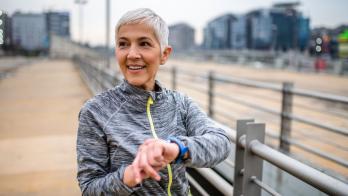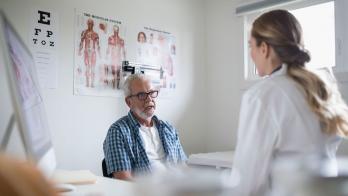The big HIMSS 2016 annual conference has come and gone, but if you were worried you may have missed some of the digital health news, trends, or memorable quotes that surfaced at the event, MobiHealthNews has you covered.
The roundup below includes all of MobiHealthNews' coverage of HIMSS 2016 along with a few links out to our sister site Healthcare IT News and others reporting from the show.
FHIR in action: FHIR (Fast Healthcare Interoperability Resources) was one of the most-discussed topics at the conference, but it was often discussed in the abstract. In one session, hosted by Margeret Dittloff, a registered dietician and product manager at the CBORD group and Eric Haas, a consultant at Health eData, gave a deep dive into one particular use case: nutrition.
At the beginning of the year, Dr. [John] Halamka [CIO at Beth Isreal Deaconess Medical Center] put his top IT predictions for the year out there,” Dittloff said. “And one of those was that innovation would come from empowered clinicians and it would be in the form of embedded apps that would leverage the EHR data that we have in our systems and not necessarily be bound by those systems. And we think he’s right, and it’s the emergence of the FHIR standard that’s making that possible for us.”
Dittloff and Haas went on to describe, in some detail, a system they built that uses FHIR to manage nutrition of patients in the hospital on feeding tubes. The app gives providers at-a-glance graphical information about the nutrition they ordered and the nutrition the patient actually received, either tracked via the feeding tube itself or reported manually by a nurse.
"How much easier is it to look at that?” Dittloff said, gesturing to the graph. “In a glance I know I’ve got a problem, I need to intervene, I need to talk to nursing, I need to figure out what needs to be done. Maybe [the patient isn’t] tolerating the feeding and I can change my order. But if I don’t have access to this information — and I might be offsite so a mobile app could give me this data — I have to dig it out of the chart the way I have to today, and people don’t do that. So I really think this will help in terms of coordinating care and improving the care of the patient.”
DeSalvo: ONC kicks off 3 developer challenges to advance FHIR: National coordinator Karen DeSalvo, MD, announced three new developer challenges that aim to advance interoperability via the emerging FHIR standard. The “challenge grants” have three streams: a consumer-facing, vendor neutral app based on FHIR (Fast Healthcare Interoperability Resources), a provider-facing app, and a discovery place where people can go to download those apps. More
HHS, Epic, Cerner, top five private health systems commit to patient data access: US Secretary of Health and Human Services Sylvia Burwell announced today at HIMSS16 in Las Vegas a new joint commitment from a number of healthcare providers and health IT companies to make patients’ data more accessible and available and implement new interoperability standards. The list of groups committed to the cause includes companies that provide 90 percent of the EHRs in the United States, among them Epic, Cerner, Allscripts, athenahealth and Meditech. It also includes the some of the largest private healthcare systems in the US including HCA, Community Health Systems, Ascension Health, Intermountain, Kaiser Permanente, Geisinger, Johns Hopkins, Partners, Dignity as well as professional organizations and other stakeholder groups. More
ONC privacy chief talks APIs and how not to use HIPAA: The ONC and OCR are tired of providers using HIPAA as an excuse not to share data with patients — the opposite of its intended purpose. That was the strongest message delivered by ONC Chief Privacy Officer Lucia Savage, who said during an educational session at HIMSS16 in Las Vegas that her office is working on an educational campaign, including blog posts, fact sheets, and new guidance documents, that aims to put an end to that misinformation. We’ve had a lot of people say over the years ‘I can’t send that data where you want because the privacy laws don’t allow me to do that.’ That happened to me personally in my family, and I know it’s happened to a lot of other people,” she said. “So we have this myth out there, but that’s not actually how the rules work.” More
 Video: The current state of patient generated health data: MobiHealthNews talked to various digital health companies about the current state of patient generated health data in this pre-HIMSS video report. More
Video: The current state of patient generated health data: MobiHealthNews talked to various digital health companies about the current state of patient generated health data in this pre-HIMSS video report. More
How consumer health, fitness devices reveal HIPAA's blurry lines: ONC Chief Privacy Officer Lucia Savage talked about what HIPAA doesn't say. On Thursday, her predecessor, former ONC privacy chief Joy Pritts, talked about what HIPAA doesn't cover. Pritts, now a consultant, was joined by Morgan Reed, the executive director of ACT The App Association, in a talk about pitfalls providers can fall into when it comes to patient data privacy.
"If I go online and I fill out a health risk assessment just on my own -- I think, this is a cool thing to do, I’m gonna check it out -- that’s not covered by HIPAA, and what that company does with that data is not subject to HIPAA privacy rules," Pritts said. "So you go to almost the same website but they have another page and that page is being offered on behalf of a covered entity, that’s covered by HIPAA. And it can be difficult for companies to know when they’re crossing that line."
This uncertainy only increases when it comes to consumer activity trackers, she added. More
A data approach to medication adherence: Brian Dixon, a research scientist at Indiana University’s Reigenstrief Institute Center for Biomedical Informatics and Dr. David G Marrero, director of the Diabetes Translational Research Center, shared some findings from a study and a survey of why Hoosiers don’t take medication for type 2 diabetes.
“There have been a lot of efforts in the past to deal with the problem of appropriate medication utilization in type 2 diabetes,” Dixon said. “Many prior mHealth innovations have offered narrowly-scoped solutions with very little success. If you review medication adherence data in diabetes, what you learn is the very best of the studies you see maybe improve medication utilization by about 20 percent. So they’re not really robust, successful interventions.”
What they found was that, among other things, adherence could be a public health problem: in Indianapolis, a dearth of downtown pharmacies combined with a poor public transportation system led patients citing “access to medication” as their number one barrier to adherence. Additionally, they found that only 23 percent of primary care providers talk to patients about medication adherence. They also found that digital means, such as a mobile-enabled patient portal, weren’t necessarily effective in improving adherence.
“We hear so much about 'so many people have smartphones', 'everyone has access to the internet,'” said Marrero. “[But in our study] even though people felt they had access to the internet, when push came to shove, they didn’t."
Podcast: Digital health efficacy: In this pre-HIMSS16 podcast MobiHealthNews tackles the topic of digital health efficacy: trends over the years, potential pitfalls, and strategies for proving efficacy. More
Louisiana health systems use tablets for clinical trial recruitment: Thomas Carton, director of health services research at the Louisiana Public Health Institute, is also the principal investigator at REACHnet, a research collaboration between a number of Louisiana health systems, including Ochsner. He spoke at HIMSS about a tablet-based clinical trial recruitment program, called the pragmatic trial app suite, that helped recruit patients into REACHnet’s Health in Our Hands research network, and from there bring them into various ongoing trials.
“Our thinking was ‘How in the world can we recruit 2,500 patients very quickly, across multiple systems, using the old methods, which basically consist of putting a clinical research coordinator at the site and just approaching people when they’re in the clinic, out of the blue, and trying to get them to sign on to a long consenting process in person, when they probably need to go back to work or pick up their child or something?’ Now we built some other functions, but ultimately, the vision of the pragmatic trial app suite was to reduce the cost of recruitment for trials.”
The app would be given to patients during downtime when they were waiting to see their doctor. It included an informational video, some screening questions, a consent form, and an option to give contact information for follow-up if they couldn’t or didn’t want to sign up at the time. Data would be sent to both the patient’s EMR and the research network. Ultimately, they were able to enroll 4,000 patients in 10 months with a 30 percent consent rate in an initial pilot across 16 clinics at two health systems.
ONC taps Accenture to create patient-generated health data framework: Accenture Federal Services announced a two-year consulting contract with the ONC to help the federal government create a framework for collecting and using patient generated health data in both research and clinical care. Accenture executives told MobiHealthNews that this framework is an important first step toward creating standards that would make patient generated health data more interoperable. Mary Edwards, who leads Accenture's work with federal civilian health agencies, explained to MobiHealthNews during an interview that this type of data increasingly is collected by consumer devices, like Fitbits, and is rarely a part of a clinical or claims record. More
Podcast: Patient generated health data: In this pre-HIMSS16 podcast we tackle the topic of patient generated health data -- why now is the time, what obstacles need to be overcome, and what the future of patient generated health data might look like. More
Carolinas HealthCare monitors Fitbit data to intervene with CHF patients: With 11 million patient visits each year, Carolinas HealthCare System has been looking for ways to better manage their patient load. The volume is really starting to crush us, especially in those primary care practices where we see these doctors are busy, busy, busy,” Pamela Landis, vice president of information services at Carolinas HealthCare System said during a presentation at the Patient Engagement Symposium at HIMSS16 this week. That was one of the reasons Carolinas rolled out video visits with American Well in late 2014. Landis described it as an attempt to “virtualize” as much of the care they provided as they could. More
Mount Sinai launches data sharing initiative for digital health pilots: Dr. Ashish Atreja, director of the AppLab at Mount Sinai hospital, believes that the lack of a robust body of digital health evidence is a problem. That's not an uncommon opinion. But Atreja thinks the key to improving the situation is collaboration, and at a small reception at HIMSS16 he made a plea to doctors to share their own digital health pilot data through a new data sharing initiative called NODE Health (Network Of Digital health Evidence in Health).
"We should not [have any] doctor prescribing an app until there is evidence-based digital medicine behind it," he said. "But how do we do it? None of us can do it alone, so we are launching a network. It’s an open network, which you can be part of today, and we feel ourselves like there are so many academic medical institutions, startups, and nonprofits getting together and running their pilots. But if they just do it alone there’s no supporting structures.” More
 Video: Telehealth is trending up: MobiHealthNews interviews various digital health companies to discuss the current state of telehealth in this pre-HIMSS video report. More
Video: Telehealth is trending up: MobiHealthNews interviews various digital health companies to discuss the current state of telehealth in this pre-HIMSS video report. More
iHealth Labs launches provider hub: iHealth Labs, the Andon Health subsidiary that makes a range of FDA-cleared connected health devices including glucometers, blood pressure monitors, weight scales, and a forthcoming EKG device, announced iHealth Connect, its enterprise health management system. The system includes iHealth Gateway, a secure hub for collecting data from various iHealth devices in the home as well as software systems for diabetes management, outpatient care, and population health.
“The core features really are, first we have real time data connection,” Yuchen Wang, VP of Engineering said in a short presentation at HIMSS. “Then we have trend analysis, it will automatically trigger alerts for the doctors, and we can send reminders for patients to check their blood pressure or take medicines. On the other side, we can do customizable progress tracking. Last but not least, we do lifestyle interventions.”
This represents a new direction for iHealth, which has up until now been primarily a direct-to-consumer device company.
“The more we work with our patients in the healthcare system, the more we realize people are the most important piece in the whole solution,” Wang said. “So we really wanted to make something that connected patients with their provider, with their family and friends.”
UnitedHealthcare, Qualcomm launch mobile-enabled wellness program: UnitedHealthcare has partnered with Qualcomm subsidiary Qualcomm Life to launch a new mobile-enabled wellness program, called UnitedHealthcare Motion. The program is designed for UnitedHealthcare members and their covered spouses who are enrolled in high-deductible health plans. If participants meet certain goals, they can earn up to $1,460 per year in health reimbursement account credits. The three metrics that UnitedHealthcare measures to reward participants are frequency of activity (being active six times a week for at least five minutes), intensity of activity (walking 3,000 steps in 30 minutes), and tenacity (walking 10,000 steps per day). More
Following layoffs last week Aetna merges iTriage with WellMatch: Although this wasn’t announced at HIMSS, during week of the conference Aetna quietly merged its Denver-based health app-maker subsidiary iTriage with its cost transparency business, WellMatch, to form one team. The move follows lay offs across four Aetna businesses, an iTriage spokesperson confirmed to MobiHealthNews. The iTriage app, which has been downloaded more than 15 million times, helps consumers connect with the right care provider via a symptom navigator. It's unclear what the new business entity will be called, but reports coming out of the office in Denver indicate some of the iTriage branding and signage around the office has been removed and returning employees were told that today was "day one" at the new company. More
WebMD survey: Millennials and seniors are least likely to use wearable fitness trackers: Millennials and Silents (the generation born prior to 1942) are the least likely generations to use tech tools like wearable fitness trackers, according to a survey of 2,600 WebMD users, presented at HIMSS16 in Las Vegas. But younger and older respondents gave very different reasons for why they don't use these tools. "Millennials were more likely to select cost as their reason for not wearing their devices," Christina Hoffman, VP Quality and Strategy at Medscape said during her presentation. "On the other end of the spectrum, the Silent Generation says the reason they don’t is because a doctor hasn’t recommended it. What’s the opportunity here? The implication is that Millennials might benefit from free devices and the older generations, if the doctor says to them, this might be helpful for you, they’ll do it.” More
How to prod along gamification in healthcare: Gamification has a perennial presence at health tech conferences, but never seems to take central stage. Amanda Havard, Chief Innovation Officer at Health: ELT and Charlie Schroder, a digital strategist and consultant, talked about what’s holding the space back and how health stakeholders can launch gamified apps that work. One topic that frequently comes up in gamification discussions is “pointsification”, or apps where the only game-like strategy is the use of badges and points to motivate people. While Havard and Schroder acknowledged the controversy about whether that really counts as gamification, they also said that points and badges are very powerful motivators and shouldn’t be dismissed. More
 Video: Patient access to their health records in 2016: MobiHealthNews interviews various providers and digital health executives to discuss patient access to their own health records in this pre-HIMSS video report. More
Video: Patient access to their health records in 2016: MobiHealthNews interviews various providers and digital health executives to discuss patient access to their own health records in this pre-HIMSS video report. More
Investors on health tech trends: fewer, better pilots and smaller, reliable bets: The world of pilots is changing, according to a panel of health tech investors at HIMSS16 in Las Vegas moderated by Norwest Ventures General Partner Casper de Clercq. De Clercq moderated a panel of investors that included Lynne Chou O’Keefe, a partner at KPCB, Dr. Lucian Iancovici, senior investment manager at Qualcomm Ventures, and Dave Schulte, managing director at McKesson Ventures. “We went through a period where pilots were du jour and anybody could get a pilot in a health system and, while they’re not all on the same timeline, there is this sense that we’re moving into the next phase,” Schulte said. “Pilots won’t be as easy to get, but they will be more meaningful and more valuable. That’s my hope anyway, we’re probably heading into a phase where pilots have defined commitment and a step that comes after that, instead of what a lot of people refer to as pilot purgatory.” More
Want to get your health tech startup funded? Know the territory and solve a problem: Health tech investors are looking for entrepreneurs that really understand the healthcare space and are solving the real problems doctors are facing. That may sound like an obvious statement, but according to Dr. Ricky Bloomfield, director of mobile technology strategy at Duke University and Claire Celeste Carnes, partner at Providence Ventures, plenty of entrepreneurs fail that test. “One of the things when we meet with individuals is making sure that they’ve started with the problem in mind,” Bloomfield said. “We’ll see people who see the latest technology, whether it’s a wearable or a sensor, whatever it might be, and they’re going all around trying to look for a way to apply that technology. One of the best examples is Google Glass, where they released the technology and said, ‘Now look for good ways to use this.’ And now where is Google Glass?” More
Canary Health receives grant to launch mobile arthritis program: Chronic condition management startup Canary Health received funding from the CDC to launch an evidence-based digital arthritis self-management program. Canary Health CEO Adam Kaufman told MobiHealthNews: “It’s a program designed at Stanford, we had the exclusive license. We’re very fortunate that for the last five years Stanford, a very large nonprofit called the National Council on Aging, the CDC, and the Arthritis Foundation have been collaborating to bring the program to thousands of people direct to consumer, and this year Canary Health is taking it to health plans.”
Medisafe launches provider offering: Medication adherence app startup Medisafe launched a provider-focused offering, but one aimed at small practices rather than hospitals. Essentially the product allows a provider, pharmacist, or caregiver to monitor a Medisafe user’s medication adherence, alongside any health information the patient is monitoring. More
American Well adds a new video feature: American Well announced a multiway video service, called AW9, that allows a patient or provider to invite other people, like a specialist, caregiver, health coach, or family member to join the visit. “Far better than scheduled, follow-up appointments or a group email thread, multiway video gives the full care team the ability to communicate with each other, at the same time, during a live visit,” American Well CEO Roy Schoenberg said in a statement. More The company also announced an SDK that will allow hospitals, insurers, retailers, or medical publishers to embed online doctor visits directly into their health apps.
Vital Connect launches new biosensor patch: VitalConnect announced the VitalPatch, a smaller lighter version of the company’s HealthPatch MD peel-and-stick health sensor. Like HealthPatch, VitalPatch measures single-lead electrocardiogram (ECG), heart rate, heart rate variability, respiratory rate, skin temperature, posture, step count and fall detection. Unlike HealthPatch, the whole device is single-use and fully disposable, which streamlines the workflow in inpatient and outpatient use cases. More Vital Connect also integrated its FDA-cleared biosensor patch with PhysIQ’s FDA-cleared personalized physiology analytics system. The integration is being piloted in clinical studies with heart failure patients across four VHA hospitals within the US Veterans Administration. More
HomeHero changes its business model: HomeHero, a Santa Monica, California-based startup that uses online and mobile tools to connect seniors with professional caregivers, announced that it would make several changes to its business model to work more closely with hospitals and health systems. That includes moving all their caregivers from contractor to W2 status, launching an app, and changing their approach to finding customers.
“So rather than saying ‘we’re going to take organic leads that come from discharge managers, from hospitals, which has already started to happen, we say let’s double down on that.’ Let’s hire a CMO, a chief nursing officer, a patient safety advocate, we’ve built out policies and procedures, we’ve built a HIPAA-compliant mobile app. And all this is to go toward the direction of working seamlessly with health systems," cofounder and COO Mike Townsend told MobiHealthNews. "Our end goal is to reduce the costs and reduce readmissions and improve the customer satisfaction of caregivers, seniors, and families.”
VisualDx adds new visualization feature: Provider-facing clinical decision support company VisualDx added a new feature to its app, called Sympticon, that allows to visualize the symptoms of a disease. The feature includes a Child-Adult sympticon and an Infant sympticon so that providers can create a differential diagnosis for specific ages. More
Xerox survey finds majority of consumers want healthcare providers to be connected: Some 70 percent of millennials said they wanted their pharmacists, healthcare providers and health insurance companies to be more connected. A slightly smaller number, 69 percent of people aged 35 to 49 agreed with this statement, while 54 percent of people aged 50 to 68 agreed, and 59 percent of people aged 69 or over agreed. More
Dell technology adoption survey: A survey conducted by Dell found that 47 percent of healthcare organizations don’t have an overarching mission for their mobile strategy and are instead focusing on internal needs. The survey also found that 37 percent have a strategic approach to their mobile strategy. More
Startup Health says funding landscape is showing signs of maturity: Startup Health’s research found that the number of mid-stage deals increased by 20 percent from 2014 to 2015. Late-stage deals grew by 55 percent in the same period. More
Beth Israel Deaconess Medical Center CIO John Halamka’s dispatch from HIMSS: “This year, the buzzwords were replaced by one overarching concept - providers and vendors must innovate or die,” he wrote. More
How to design medical apps: HHS alum turned healthcare consultant Lygeia Ricciardi and entrepreneurial pediatric endocrinologist Dr. Jennifer Shine Dyer discussed how to build health apps that will engage patients. More
West Healthcare launches communication system to aid patient engagement, pop health: West Healthcare has launched at HIMSS16 a communication system designed to automate patient engagement and extend investments in population health, the vendor said. More
TigerText partners with Salesforce, Box: TigerText will integrate TigerText Connect, its API, with Salesforce and Box to create care collaboration systems. “Healthcare is hungry for better communication tools that are embedded into existing workflows,” TigerText President Itamar Kandel said. “With TigerConnect, our partners can harness the power of secure messaging to address this need without the hassle, cost and delay of building it themselves.” More
Iowa’s Youth Emergency Services and Shelter leverages data aggregation to improve behavioral health: Stephen Quirk, CEO of Youth Emergency Services and Shelter in Des Moines, Iowa said technological innovation is used often in healthcare to improve patient outcomes, but when it comes to children, aggregating data at the individual and population level is critical. More
Patient-focused social network company partners with IBM Watson: Tiatros, a company that has developed a social network for patients and their health network, including providers, caregivers, and peers, has partnered with IBM’s Watson. More
NFL player Peyton Manning discussed players' use of trackers: Days before retiring from the NFL, Manning told HIMSS attendees that players have started wearing trackers to practice to monitor their steps. “Analytics has played a huge role, from a concussion standpoint to an overall health standpoint,” he added. More
 Video: Next steps for digital health in 2016: MobiHealthNews talked to a variety of digital health luminaries to discuss the group's thoughts on what's next for digital health in 2016 as well as where the conversation needs to shift in this pre-HIMSS video report. More
Video: Next steps for digital health in 2016: MobiHealthNews talked to a variety of digital health luminaries to discuss the group's thoughts on what's next for digital health in 2016 as well as where the conversation needs to shift in this pre-HIMSS video report. More




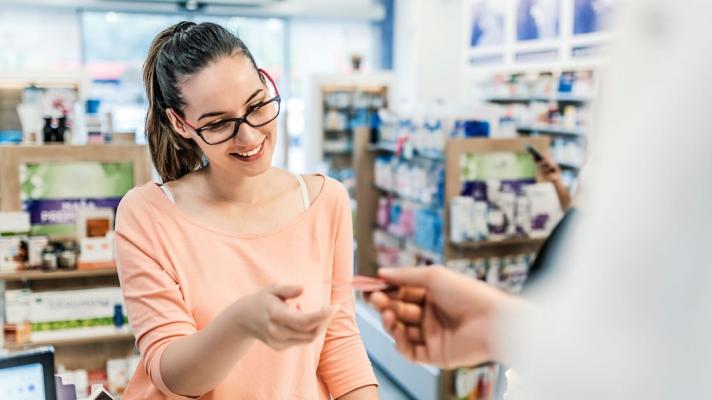

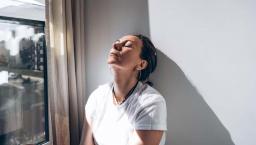
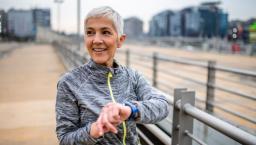

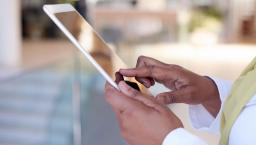

def4.jpg)







